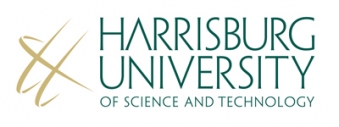Here's a preview of my blog post, "Mexican Drug Wars and Social Media: Deadly Lessons in Information Power":
Recent CNN and New York Times news reports raise thought-provoking albeit disturbing notions about social media as a means to enable the information element of power. The reports about Mexico’s rampant drug war offer a case study of how law-enforcement, para-military, and military agencies need to adapt to the increasingly influential role of news and social media in power struggles.
Recent CNN and New York Times news reports raise thought-provoking albeit disturbing notions about social media as a means to enable the information element of power. The reports about Mexico’s rampant drug war offer a case study of how law-enforcement, para-military, and military agencies need to adapt to the increasingly influential role of news and social media in power struggles.
 |
| Late editor Maria Macias |
The CNN report (“Mexican Editor's Death Linked to Work with Social Media,” Sept. 27) and three New York Times reports ("Mexico Paper, a Drug War Victim, Calls for a Voice," Sept. 20, by Randal C. Archibold; "In Mexico, Social Media Become a Battleground in the Drug War," Sept. 15, by J. David Goodman; and "Mexico Turns to Social Media for Information and Survival", Sept. 24, by Damien Cave") all described grisly murders of journalists like Maria Macias (right) and other social media users, allegedly by members of drug gangs, as a means to discourage Internet reports about gang activities.
A synthesis of these stories reveals how social media has become such an influential means of information power that adversaries are now battling for control of this space. In particular, a careful reading of the Times reports provides a sense of how strategic communication activities are becoming the center of gravity that Prof. Dennis Murphy wrote about in this blog on Sept. 14 (“Resources: How Important is Information as Power?”). Just as Murphy wrote, “Destroy the center of gravity directly then, and you defeat your enemy,” the Mexican drug cartels are attempting to destroy Mexico’s system of free speech and defeat the will of people to oppose their illicit activities.
First, social media must be managed strategically. According to Cave, social media can “create and destroy communities.” Veracruz’s State Assembly recently passed legislation outlawing use of social media to undermine public order. Also, the recent murders of online journalists exemplify the personal risks of reporting via social media in Mexico. Still, social media can promote public safety by warning people to stay away from areas where drug cartel violence erupts. According to one Twitter user quoted in Cave’s article, “People’s lives are saved with Twitter.”
Second, social media is pervasive. Many Mexicans see social media as essential for survival, and social media can unify citizens dispersed over large areas. Cave reported that there are more than four million Twitter subscribers in Mexico and, of more than 30 million Internet users, 95 percent have Facebook accounts.
Third, social media fills a psychological need. Many Mexicans see the traditional pillars of state and press as contaminated by organized crime. Social media authors on the other hand are viewed as independent and trustworthy. According to a doctoral student at the University of Texas quoted by Cave, social media in Mexico “fulfill the need for information in an immediate and accessible way and, on a deeper, psychological level, provide some knowledge or certainty in the face of uncertainty.”
Finally, social media can be a source of reliable information. News reports can be “bundled” on social media channels like Twitter, which contains streams of content organized by “hashtags” that connect tweets of similar content or subject matter. This bundling allows readers to aggregate information instead of relying on isolated, unconnected reports. Social media is also self-regulated. According to one researcher interviewed by Goodman, “Most of the information [on social media] is reliable and the information that is not often goes ignored.” Furthermore, a large percentage of tweets are actually retweets, which are “curated” by others and scrubbed for reliability.
For a deeper analysis of this issue and its relationship with U.S. policy on using information as an element of power read my complete post on the DIME Blog.







